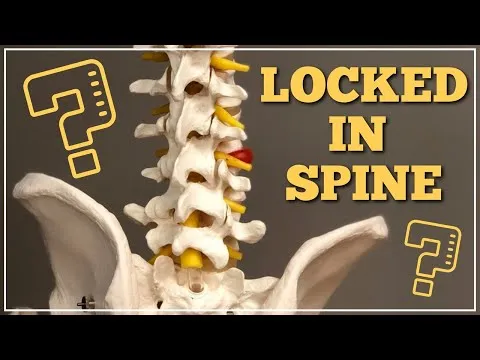How a Locked-in Spine Can Help Your Back Pain or Sciatica
What is a locked-in spine?
Your back is designed to be the strongest when it is in its natural S position. This means a slight curve in the neck, a slight curve out at the midback, and a slight curve in at the low back. Combine this S position with a tightened abdominal core and you have the locked-in spine.
We believe your back is most vulnerable to injury when it is in the C position. Whenever you put your back into the C position, you are placing increased stress on many of the structures of your back. This stress can cause the discs to deform (as we previously demonstrated with the ball and vertebra example). However, it can also cause the ligaments to stretch out and lose their stability. Ligaments are tough bands that connect bone to bone.
When you are in the C position you are placing a continuous stress on your ligaments. The following is a simple demonstration used by physical therapists to illustrate how that stress feels. Grab your ring finger and stretch it back. You are stretching ligaments (among other things). This discomfort increases if you bring your finger back further and further, as well as if you keep the pressure
continuous.
Eventually overtime the ligaments holding the bones in your finger together may stretch out and lose the ability to hold your hand bones in a stable manner. This occurs in massage therapists who overwork their fingers and hands. The result is more instability and pain.
Is the locked-in spine good for you?
When your back is in the S position, the back muscles are in an optimal position to contract and protect your back. Watch a weightlifter as they perform squats with hundreds of pounds of weight on their backs. Note how straight their backs are as they maintain an S curve. Weightlifters with good form will keep their backs straight, while most of their movement comes from their hips. This is often referred to as hip hinging. The S curve combined with abdominal tightening can
protect your spine.
How to obtain a locked in spine?
First, place your spine in the S position. Use a broomstick or BOOYAH Stik to help obtain proper alignment. The stick should have 3 points of contact if done correctly, which include back of head, mid back, and pelvis. The C position only has one point of contact, which is the midback.

You should think of your back as though it is in a cast “locked in” to the S curve. All movement should come from your hips.
Once in the S position and before you perform a task such as lifting, tighten your abdomen. How do you tell if you are tightening your abdomen? Take a single finger from each hand and poke yourself on each side of your abdomen (belly). Tighten up your abdomen. If you are doing it correctly you should be able to feel your abdomen tighten with your fingers.
If you have increased pain in your back with the locked in position, try adjusting the arch in your low back (with more or less of an arch). Re-tighten your abdomen and try bending forward again. If it still increases your back pain, try to not bend forward as far.
The locked-in spine position should be performed throughout a typical day in your
life to help protect your spine.
Interested in learning about the products mentioned in today's video:
- Booyah Stick: https://store.bobandbrad.com
This video is a part of a series of videos on how to treat Sciatica/Back Pain on your own. Check out the full series of videos along with downloadable guide sheets for each video on our website here: http://bobandbrad.com/programs
